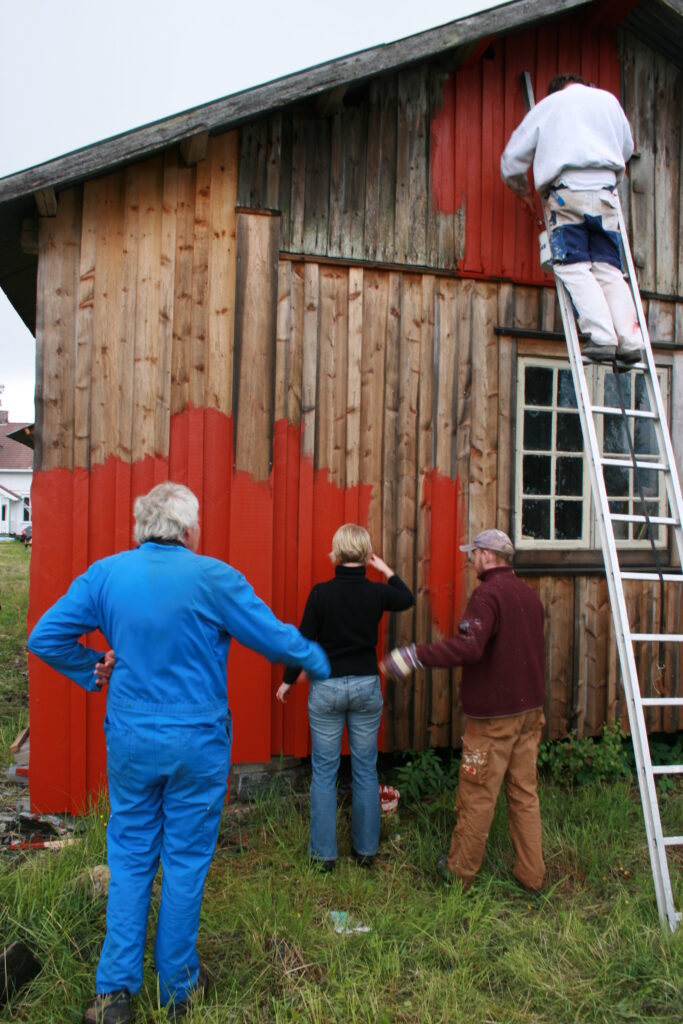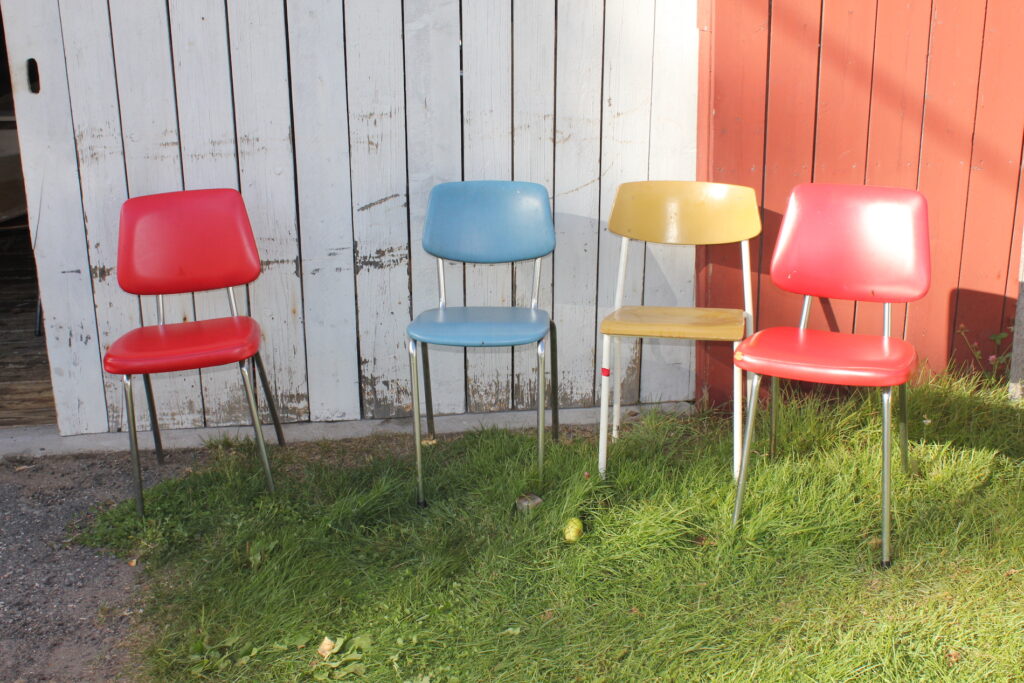Norway is a country characterised by high voluntary activity, 78% of its 5.4 million inhabitants are members of at least one voluntary organisation, 48% are members of two or more. Volunteering is and has been an important aspect of Norwegian society, and in recognition of that, 2022 has been designated as the Year of Volunteering.1 During this year NGOs and smaller volunteering associations together with local, regional, and national governments have collaborated in highlighting the value of volunteering in Norway.
The Directorate for Cultural Heritage (Riksantikvaren) has reviewed their focus on volunteering and is producing an updated volunteering strategy as well as organising a major conference on volunteering in the cultural heritage sector in September 2022. Riksantikvaren has also awarded 2.5 million NOK in extra support to local voluntary associations.
Figures from Kulturvernforbundet (the Federation of Cultural Heritage Organisations) show that volunteers in its member organisations contribute about 6 million voluntary hours annually through work on documenting, maintaining, and disseminating cultural heritage. Cultural heritage management as we see it in Norway today would not be possible without the extensive voluntary work within the sector.
In 2020, the Norwegian parliament adopted a new white paper on cultural environment policy.2 The white paper established three national goals for cultural environment policy, of which one is: ‘For everyone to have the right to engage and take responsibility for the cultural environment’. The Faro-convention (2005) emphasises people’s right to cultural heritage as well as the right to interpret their own history and define their own cultural heritage. The Norwegian government´s ambition is for more people to feel ownership of and take responsibility for cultural heritage and environments. The white paper states that the public sector should facilitate partnerships and cooperation with all citizens and work actively on democratic involvement in cultural environmental management. Riksantikvaren’s new volunteering strategy follows this goal, and the Directorate wants to facilitate better and closer cooperation and relationship with the voluntary sector.
The Norwegian government´s ambition is for more people to feel ownership of and take responsibility for cultural heritage and environments.

Culture of volunteering in Norway has a significant history
The voluntary sector has been crucial for the safeguarding of cultural heritage, cultural environments, and cultural landscapes in Norway from the middle of the 19th century. The National Trust of Norway was formed in 1844 by committed individuals who wanted to create a forum for the protection of the Norwegian past. The National Trust is the oldest existing cultural heritage NGO in the world. Until the establishment of the Riksantikvaren 1912, the National Trust served as the de facto national cultural heritage authority. Voluntary work thus has had a long and important role in Norwegian cultural heritage history. Today, the National Trust of Norway is one of a wide range of national and local NGOs working on the protection, care, use and dissemination of cultural heritage. The aforementioned umbrella organisation Kulturvernforbundet has 31 member organisations with over 260,000 individual members. The voluntary activity in the 31 organisations ranges from groups that mainly work with the protection of physical buildings and historic vessels to those that safeguard craft traditions and intangible cultural heritage.
In addition to the important work volunteers do to safeguard cultural heritage, we know that voluntary activity is positive for both public health and integration. Volunteers generally have better mental and physical health compared to those who do not participate in voluntary work.3 Getting more people to participate in voluntary activities will have positive effects on public health and wellbeing.4 Voluntary activity is also positive for integration, NGOs are key to involvement in local communities and a way into education and working life.5
The Directorate has had two earlier volunteering strategies, the first was adopted in 2014 and then a revised version in 2017. As a result of the strategies, cooperation with the national NGOs has become more binding and predictable. Riksantikvaren and the NGOs have collaborated on various projects, and organisations have been included in several development processes at the Directorate for Cultural Heritage. However, cooperation, participation, and awareness of the importance of voluntary cultural heritage protection can still be improved in all parts of cultural environment management.
In the new strategy (2022), Riksantivaren has a stronger focus on the many roles of volunteering, how the voluntary sector and cultural environment management can reinforce cooperation and how we can strengthen participation. The goal is for the voluntary sector and cultural environment management to complement each other and together contribute to ensuring that the cultural environment is safeguarded as a resource in societal development.

The changing field of volunteering
Voluntary engagement is changing.6 In the past, large national organisations dominated voluntary work. These days we see a shift towards more short-term ad hoc actions, for example, a neighbourhood joins forces to preserve an old school building or to protest against development plans or demolition of a building.
Social media has given local engagement new arenas to be active on. In Norway, a group called Arkitekturopprøret (Architectural Rebellion) has established itself as an association on Facebook and Instagram. The architectural rebellion started as a protest movement in Sweden in 2014 and has also spread to Estonia and Norway. The group protests against what they see as reckless densification and poor architecture and appeals for safeguarding and respecting existing cultural environments. The Norwegian group has gained many supporters, with over 30,000 followers on Facebook and 66,000 on Instagram and has established itself as an important voice in the public debate on architecture, urban and rural development, and cultural heritage management.

Volunteers were the ones who took the initiative to preserve the remaining stave churches when they were in danger of disappearing, and volunteers have challenged the authorised cultural heritage management and championed new categories of cultural heritage and cultural environment to be recognized.
Another movement that was born on social media is the Swedish ‘deserted farm movement’, which has had its offshoot in Norway with Lys i gamle hus (Light in old houses). Lys i gamle hus is a social media campaign that has evolved into a pilot scheme to study abandoned buildings and how to transform them from derelict into functional houses. The campaign was formed by people who shared an interest in environmental issues and building preservation for mutual inspiration and for raising awareness. They use hashtags to connect and share content as well as means to engage and recruit more volunteers to contribute to the cause. The campaign is now run by The National Trust of Norway with support from Riksantikvaren.
For the Directorate, it is not easy to keep track of or cooperate closely with local, spontaneous and/or digital action groups all across Norway. The new strategy therefore points out that regional (county authority) and local (municipalities) cultural heritage management has a special responsibility for the many voluntary associations that are not part of a national structure, while the Directorate takes special responsibility for the national organisations in the field. The strategy is targeted at national organisations even though it is important to also facilitate close cooperation between cultural environment management and voluntary cultural heritage activities, both nationally and locally. The strategy aims to continue good cooperation, including the establishment of a Heritage Council where the nationwide organisations participate. The Heritage Council will meet twice a year and discuss current issues and strategic challenges in heritage management. The strategy also emphasises the importance of increased participation in cultural environment management and general planning matters nationally, regionally and locally. One strategic ambition for the Directorate is to climb higher up the participation ladder in all cases where participation is natural.
The volunteering strategy establishes seven goals for cooperation with NGOs in the future:
- Riksantikvaren will work to strengthen coordination of state instruments.
- NGOs are involved in the development and consultations of national strategies, guidelines and practice development that affect their field of work.
- Riksantikvaren assists NGOs.
- Riksantikvaren will establish cooperative arenas between cultural environment management and NGOs.
- Riksantikvaren cooperates in special initiatives and projects with NGOs in the cultural environment field and supports voluntary initiatives that complement the role of public authorities.
- Riksantikvaren works to improve the framework conditions for the voluntary sector.
- NGOs and cultural environment management assist each other in developing and sharing expertise and knowledge.
Voluntary efforts are essential for functional and inclusive cultural environment management. Volunteers were the ones who took the initiative to preserve the remaining stave churches when they were in danger of disappearing, and volunteers have challenged the authorised cultural heritage management and championed new categories of cultural heritage and cultural environment to be recognized. Without volunteers, important cultural heritage would have disappeared and will disappear or decay. It is therefore crucial for the Riksantikvaren that voluntary cultural heritage conservationists have the best working conditions possible, and the Riksantikvaren’s new voluntary strategy will aim to facilitate an extensive cooperation between cultural environment management and the voluntary sector in the years to come.

ESPEN OPENHAUG is senior adviser to the Norwegian Directorate for Cultural Heritage.
HEADER: Heritage day at the National Trust of Norway Oslo office. Photo: The National Trust of Norway
PUBLISHED: Maja 109-110 (summer-autumn 2022) with main topic Built Heritage and Modern Times
1 The Year of Volunteering https://frivillighetensar.no/
2 Meld. St. 16 (2019-2020), White paper on New goals for Norway’s cultural environment policy: https://www.regjeringen.no/no/dokumenter/meld.-st.-16-20192020/id2697781/?ch=1
3 Erik Goth Småland (2009), ‘Det frivillige fartøyvernet i Noreg’ [Voluntary work for the preservation of historic vessels in Norway].
4 Historic England. Discovery, Innovation and Science in the Historic Environment. Research. Issue 20, Wellbeing and Heritage Special 2022, https://historicengland.org.uk/images-books/publications/historic-england-research-20/he-research-20/
5 Meld. St. 10 (2018-2019), White paper on National volunteering policy. https://historicengland.org.uk/images-books/publications/historic-england-research-20/he-research-20/.
6 Meld. St. 10 (2018-2019), White paper on National volunteering policy. https://www.regjeringen.no/contentassets/82a9eff104b3441d92c04198370a0724/nn-no/pdfs/stm201820190010000dddpdfs.pdf





